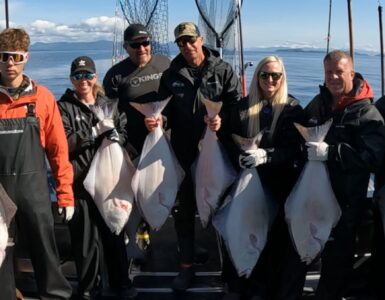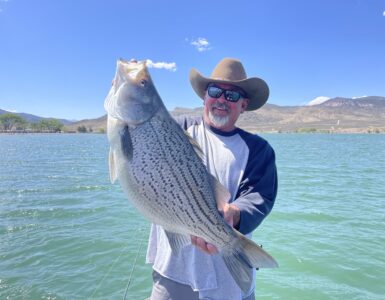(Adam Eakle) Welcome back to KSL Outdoors, I’m Adam Eakle. You know in the last few years, Sportsmen for Fish and Wildlife have taken a keen interest in the mule deer population here in Utah. so today they funded a new project in conjunction with BYU and the Division of Wildlife Resources to see if mule deer can be captured and relocated to another area.
Byron Bateman, President Sportsman for Fish and Wildlife say that these deer have “been over-utilizing the habitat here and we are going to move them up about 100 miles north up towards the Holden area where we don’t have very many deer.”
It’s a sight you don’t see very often. Deer cradled below a helicopter flying through the air.
It’s all part of a joint research program that aims to study whether or not mule deer can be moved from one place to another.
(Byron Bateman, President Sportsman for Fish and Wildlife) “If we can make this study successful then we can go into places and transplant those deer that are causing problems, agriculture damage or vehicle collisions and put them in places where we don’t have enough deer.”
In the past the DWR has culled this herd using hunters. The idea of relocating the deer came from SFW members Kelly Rollins and Travis Seifers.
Kelly Rollins, Milford SFW Members) “We thought why kill does, lets transplant them. Even if 50% of the deer live, that’s 50% more that will live than if you give doe tags.”
SFW is funding most of this three year project to the tune of two hundred and fifty thousand dollars. It works like this. A capture crew from Dragonfly Aviation targets a doe, swoops in.
Shoots a net over the deer. A mugger then hobbles the deer, gives her a sedative to calm her down. She’s then slung under the helicopter and brought back to biologists.
Anis Aoude, DWR Big Game Coordinator) “They are a little groggy, that way they don’t fight us as much when we are doing all the stuff we need to do to get them ready to go.”
(David Smedley, BYU Student) “So in the tent we are taking different measurements, we do a rump fat. A loin thickness. Give them a body condition score. We are putting collars on, ageing the deer and then taking some blood samples in a CWD test. Then put them in the trailer and they are good to go.”
The deer are then trucked north just outside of the town of Holden and released.
Biologists captured and released fifty deer over the two days. Come March they’ll re-locate another fifty using the same techniques. That way they’ll be able to determine whether the survival rate is better at moving deer in January or March. These deer will now be monitored for the next three years by BYU Students.
David Smedley, BYU Student) “We want to see ideally if they’ll stay where they are released, if they incorporate into the population, if they mix with the resident deer and reproduce would be ideal.
Greg Sheehan, D.W.R. Director) “Without these sportsman’s groups they really are collectively what helps make all of this work. The sportsman in this country have worked for over 150 years to help restore our wildlife populations and they are still doing it here today.”
(Byron Bateman) “In the state of Utah we have done over 1 million acres of habitat restoration. We’ve got the mule deer protection act that we just got passed last year. Where we are actually paying a bounty for coyotes to try and increase deer herds and bring them back. This is one of the last things we haven’t done.”
(Adam) So come March 100 deer will a new home, collars, ear tags and biologists checking in on them from time to time to see how they are doing. And how fitting is it that the new home for these deer is on the exact property that Sportsmen for Fish and Wildlife did habitat work here just a few years ago.
(UPDATE) Most of the deer seem to be staying in the study area. A few have moved in a two mile radius. So far two of the deer that were trans-located have died. Another resident deer that was collared and released in the same location has also died. Biologists are not sure what lead to the deaths of the deer as coyotes had devoured most of the evidence. BYU students will continue to monitor the deer. KSL Outdoors will have an update on the deer this summer to see how they are doing.







Add comment